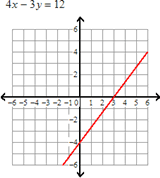Velocity is a strong indicator of good underhand throwing mechanics. A few weekends back at 14U I had a pitcher (she is just playing winter ball with me so I haven't clocked her) who throws exceptionally hard, as hard as I have seen from an 8th grader (I am guessing 62ish) and her speed completely dominated one of the top 10 14U teams in the state of Ohio. Regarding the original question:
A screw seems like it would be a tricky first pitch and would be challenging for a 8 or 9 year old to locate on the outside and not work right over the plate. I don't think you would start a boy baseball player off learning a breaking pitch?
Go for the fastball with the little ones and just call it a pitch.
Boardmember says in a different thread:If Hillhouse is correct, maybe we should teach our young DD's a movement pitch FIRST (e.g. fast drop, fast screw) and then the change-up? and essentially never teaching them a fastball since it won't be used later and might be a waste of time learning a pitch that is never used after say 12U?
so this sounds like a tough pitch to start an 8 or 9 year old on.Obviously, in order to affect the best 6-12 spin, your hands have to be large enough for both the thumb and fingertips to reach the cross laces of the seams AND be directly opposite each other... will NOT teach peel drop to pitchers who cannot reach OPPOSITE seams with both the thumb and gripping fingers unless we rotate the ball in the hand in such a way the allows them to "get a grip" with both.
A screw seems like it would be a tricky first pitch and would be challenging for a 8 or 9 year old to locate on the outside and not work right over the plate. I don't think you would start a boy baseball player off learning a breaking pitch?
Go for the fastball with the little ones and just call it a pitch.
Last edited:





